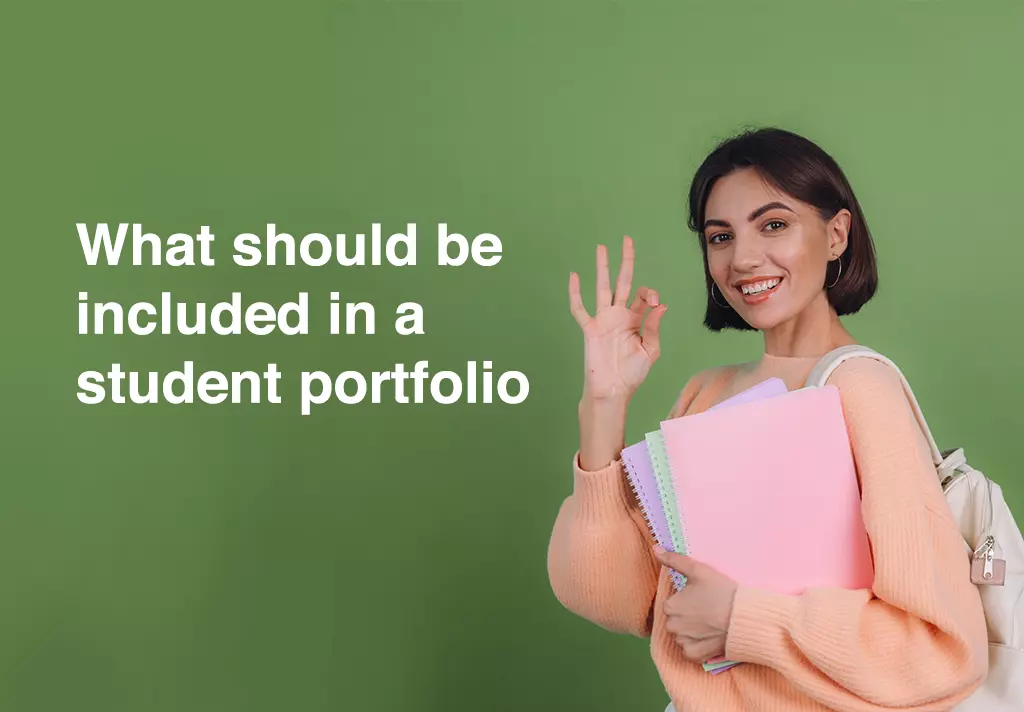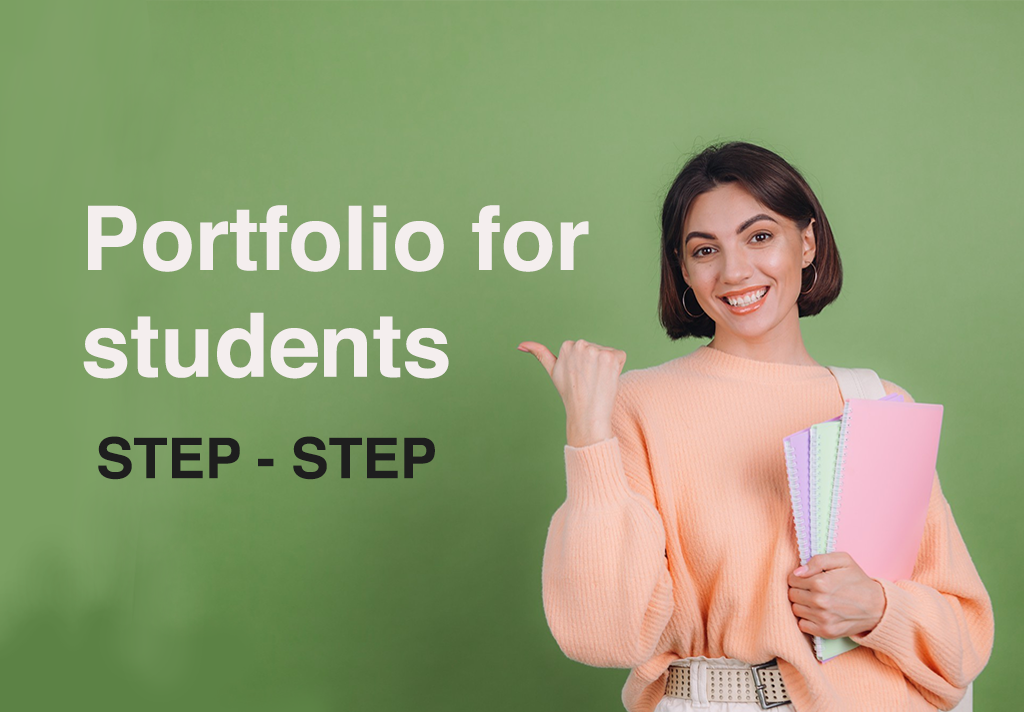When we think of assessment, it’s easy to imagine a test or a rubric attached to a score in the letter grade. However, in many industries, from art to engineering, to marketing to programming, people demonstrate their proficiency by Portfolios.
Similarly, students do craft portfolios to showcase their work, reflect on their learning, and set goals for the future.
Before diving, let’s know what the student portfolio is?
Table of Contents
What is a portfolio for students?
A portfolio is used by students of different fields in higher education. Students often use portfolios when they desire or need to demonstrate and assess specific competencies or their developments.
A student portfolio can also need in other situations such as academic approach, professional skills, reflective abilities, cultural sensitivity, language skills, or didactic competencies.
Portfolio
The portfolio is a compilation of academic work and other forms of educational evidence. It can include awards, honors, certifications, recommendations, written evaluations by teachers or peers, and self-reflection. Advocates argue that portfolios provide a richer, deeper, and more accurate picture of learning.
The portfolio may include digital archives, presentations, blogs, or websites with the same materials as physical portfolios. Digital portfolios may also include student-created videos, multimedia presentations, websites, photographs, or other digital artifacts of learning. Some portfolios are intended to evaluate learning progress and achievement in a specific course. In contrast, others are maintained throughout a student’s education.
How to make students portfolio

You decide to adopt the portfolio approach with your pupils based on research and conversations with other instructors. Innovative portfolio concepts center on:
1. Providing assessment guidelines
If a rubric or checklist is utilized to analyze the portfolio objectively, it may be an excellent tool for assessing student learning. Before beginning the portfolio, students should have the opportunity to study the rubric or checklist to ensure that they understand the expectations. The rubric (checklist) should include components to aid portfolio creation and explicitly explain how points are awarded for the grade.
2. Organizing the portfolio in a format
The portfolio can be kept on paper in a notebook or scrapbook or kept digitally online or on a flash drive.
3. Reflecting on learning experiences
Students can study the course content requirements and decide what to add to their portfolio to demonstrate their understanding of these ideas. Reflection helps the learner to analyze their own learning experience. Journals allow students to record their thoughts throughout learning sessions.
4. Trying a variety of strategies
Several documentation methodologies can be utilized depending on the portfolio. Paper documents, such as papers, artwork, written tests, teacher-written comments, peer evaluations, and other learning proof, can be organized in a notebook or scrapbook by students. These paper papers may be digitized, and students can use them to film interviews and produce movies for their digital portfolios.
5. Finding resources
Teachers can help students find materials to utilize in constructing their portfolios. Digital cameras, video equipment, technical resources, and individuals to support individual pupils are examples of resources.
6. Owning the portfolio
Students are given the authority to create, develop, and implement a customized portfolio. This method improves creativity, critical thinking, decision-making, and evaluative abilities.
7. Leading the process
The instructor will direct the portfolio process and provide timetables for pupils to adhere to.
8. Initiating a student portfolio presentations
Students can formally present their final portfolio to an outside audience to improve their oral communication abilities.
9. Obtaining support for student portfolio presentation
Participate in portfolio presentations by inviting parents, business/industry, community, college/university, and peers. High school students can utilize the portfolio to exhibit talents for high school scholarship opportunities, college entry conversations, and employment interviews.
What should be included in a student portfolio?

The components of a strong student portfolio differ by grade and subject. Still, the bottom line is that they should portray a complete and accurate picture of a student’s talents and abilities. If you’re not sure where to begin, start with some of these products.
Also Read: What needs to be on a resume [8 listed Step]
Each portfolio item is described in a letter to the reader.Readers will find this glossary useful.
Each month, quarterly, or annually, students choose and update their personal goals for the year.
- Charts, concept diagrams, timelines, pictures, and other graphics displaying crucial data such as test results
- Student-selected book extracts or quotations
- A chart that shows every free-choice book that a student read over the school year.
- Logs of Reading
- Photos of students at work
- Notes from one-on-one or small group sessions with students (e.g., guided reading notes)
- Videotapes of readings or performances (for ePortfolios)
- A writing example paragraph demonstrating a few essential writing strategies
- Sample essays of many genres are available, including descriptive, narrative, explanatory, expository, persuasive, cause and effect, and compare and contrast.
Students write technical essays, such as process analysis essays with diagrams.
- Samples of creative writing, including stories, poetry, songs, and scripts
- A collection of graded arithmetic tests that demonstrate performance patterns.
- Student work from courses other than yours, such as art, music, or intellectual topics.
What is the purpose of a portfolio
As an assessment tool and as a display of student work, a portfolio might serve as a way to demonstrate learning. The complexity of the portfolio can range from a simple collection of teacher-identified student assignments to a more complicated student-driven output exhibiting learning criteria, with the instructor evaluating mastery of the topic for a grade.
A portfolio can be done as a short-term effort or a long-term endeavor that spans the academic year. We will learn about the importance of portfolios and new ideas and best practices for implementing portfolios in elementary, middle, and high school classrooms.
Assume you are a middle school teacher interested in using student portfolios. Using this tool, you can evaluate your students’ learning progress, show parents and instructors that they can meet curriculum requirements, and be more competitive for college admission and career opportunities.
Also read: How to Make a Resume on Microsoft Word [ 3 Steps ]
Types of student portfolio
A portfolio can help you illustrate your progress. You may also utilize it to demonstrate your expertise in specific areas. As an educator, you might put your portfolio together using a reflection paper, an assignment result, samples, or comments from your lecturers, fellow students, or external supervisors.
In education, there are three sorts of portfolios:
- A showcase portfolio comprises goods that represent the owner’s capability at any given time.
- An evaluation portfolio includes goods that may be used to evaluate the owner’s abilities.
- A development portfolio reveals how the owner (has) grown by demonstrating how the owner (has) evolved. This portfolio will frequently include items from various phases of the process, stages where feedback has been received, and perhaps goods from ongoing development. Building a portfolio might assist both students and teachers at Radboud University.
Conclusion
Lecturers may utilize portfolios to enhance their lecturing skills and demonstrate their educational abilities in order to obtain their ETQ (Educational Training Qualification) (Extended Teaching Qualification) and UTQ (University Teaching Qualification).
Students, for example, can use a portfolio to demonstrate their academic skill growth or how they have evolved into competent professionals throughout their work experience placement or internship. After finishing their education, students can utilize their portfolios to exhibit their work to prospective employers in some cases.
Keep the conversation going

Hi, i’m Akash shaw creator of Adsvast agency , Hello, I am a perfectionist with deep love for aesthetics,
a graphics designer with expertise in logo design and branding.
My only goal with Notamartwork is try to help others to freelancers to get jobs and learn how to do freelancing.
